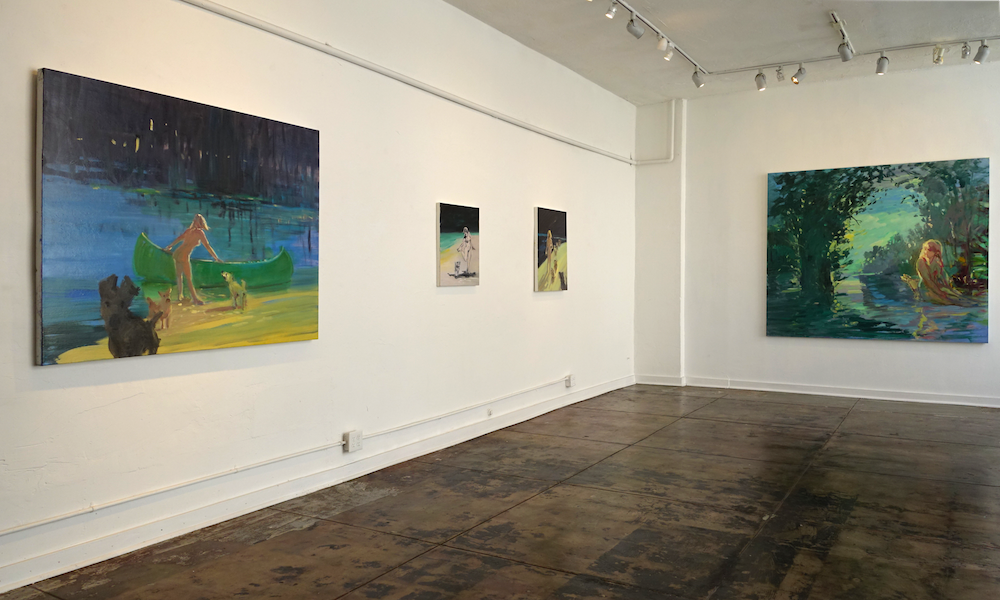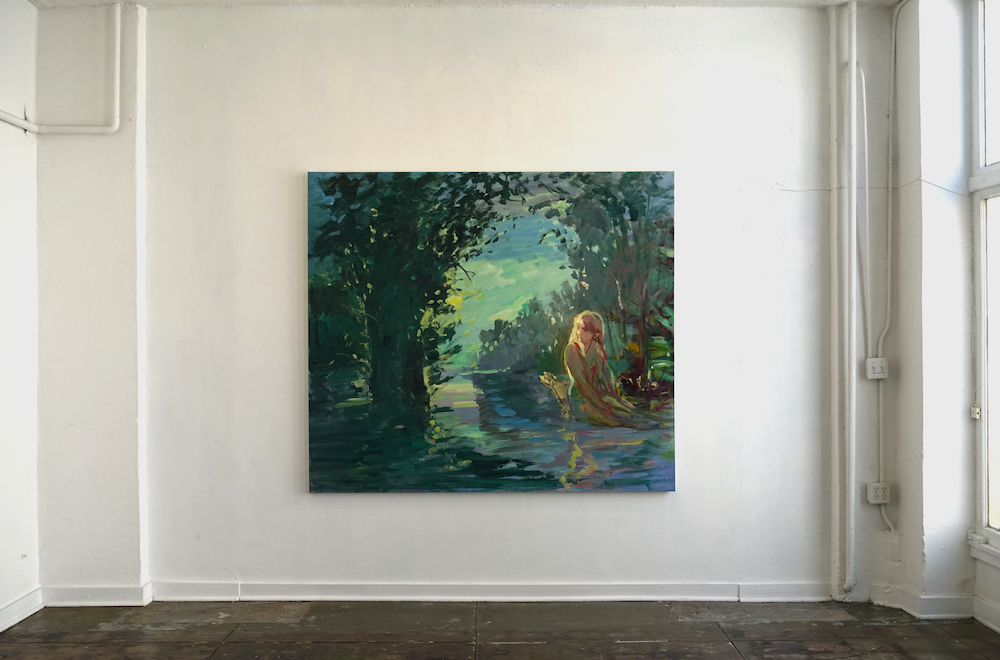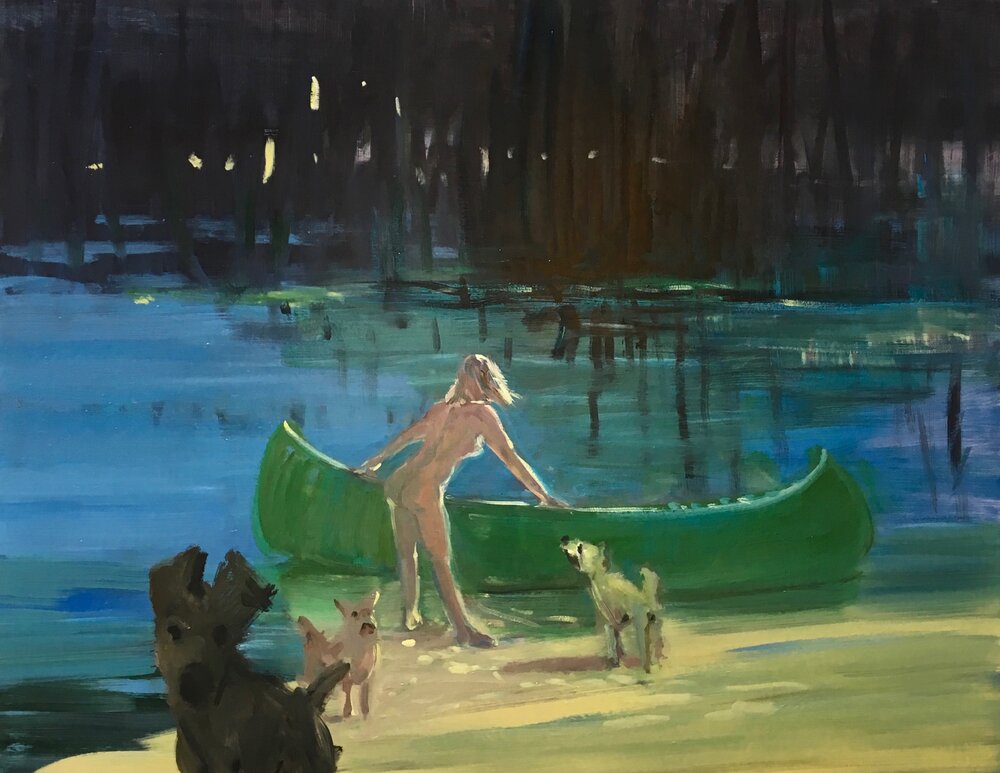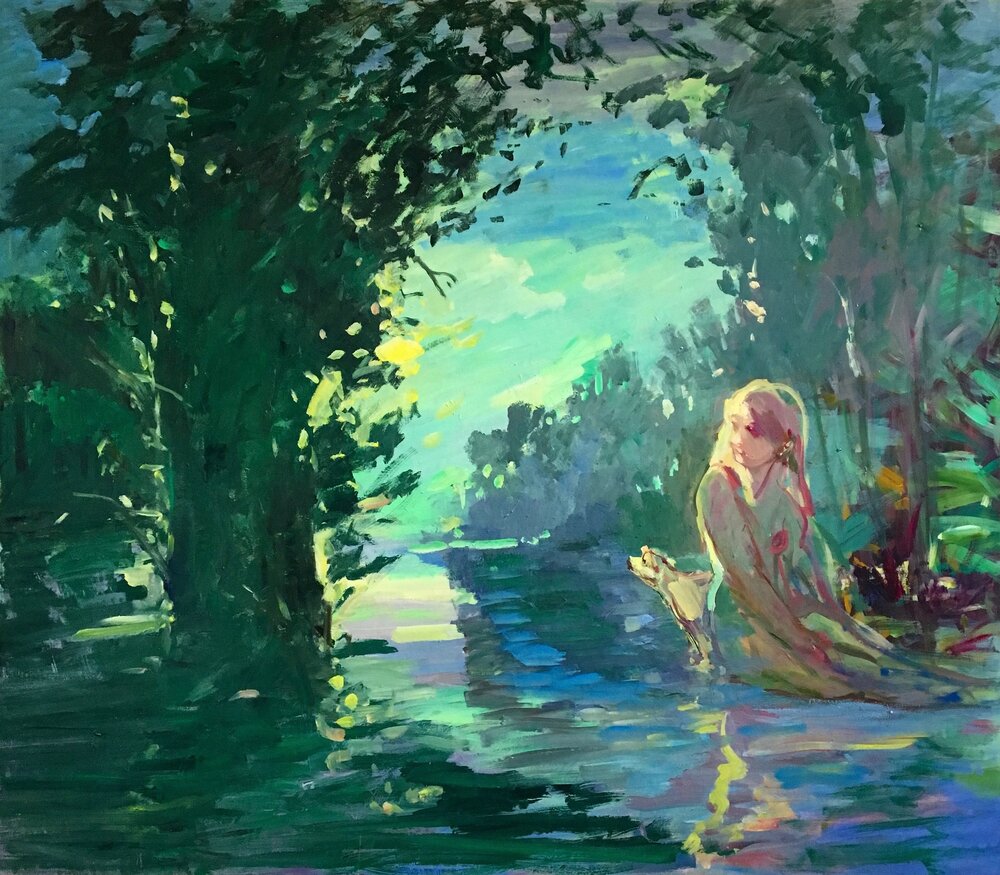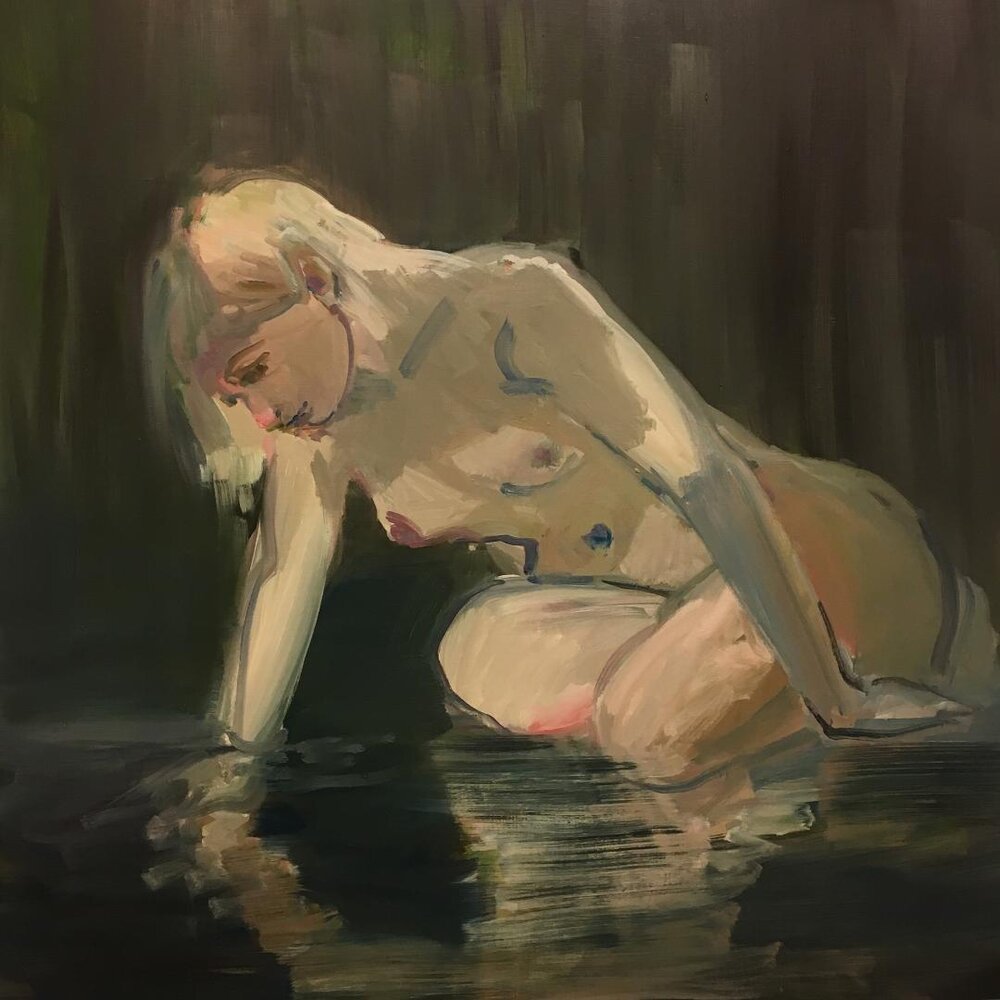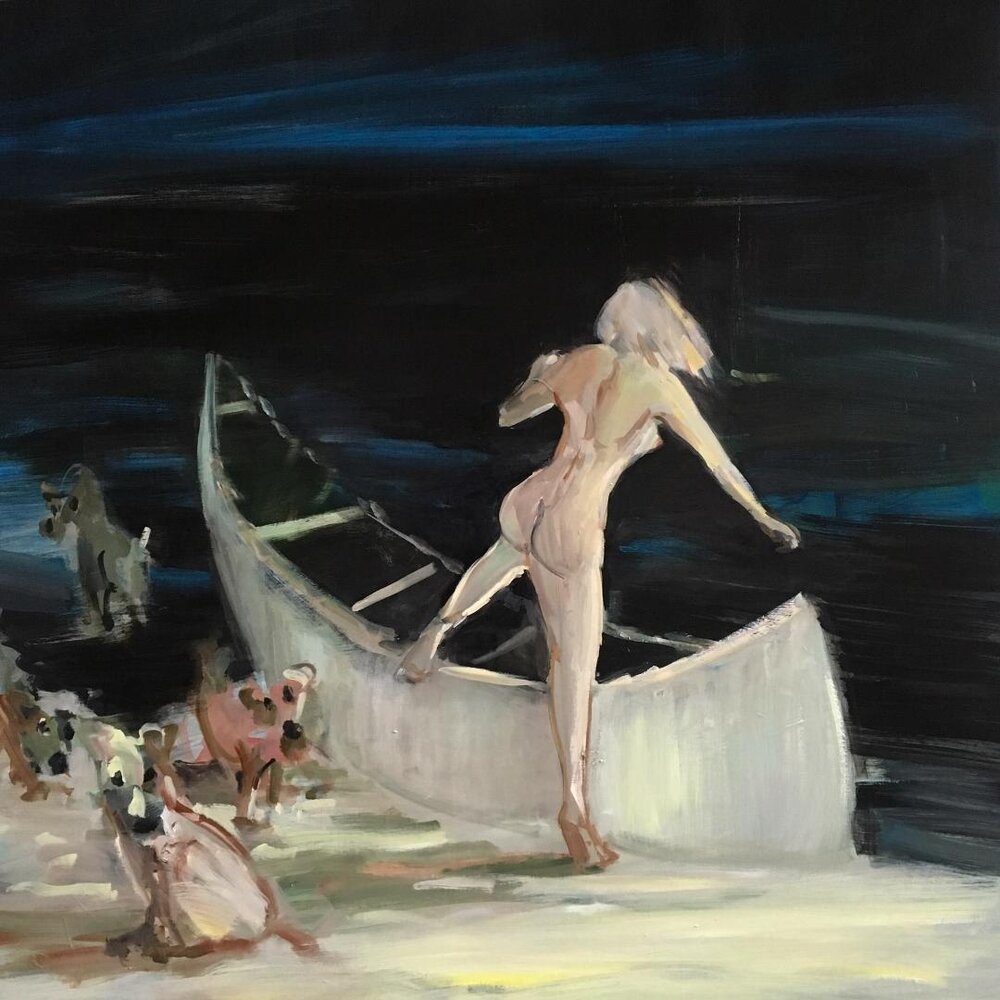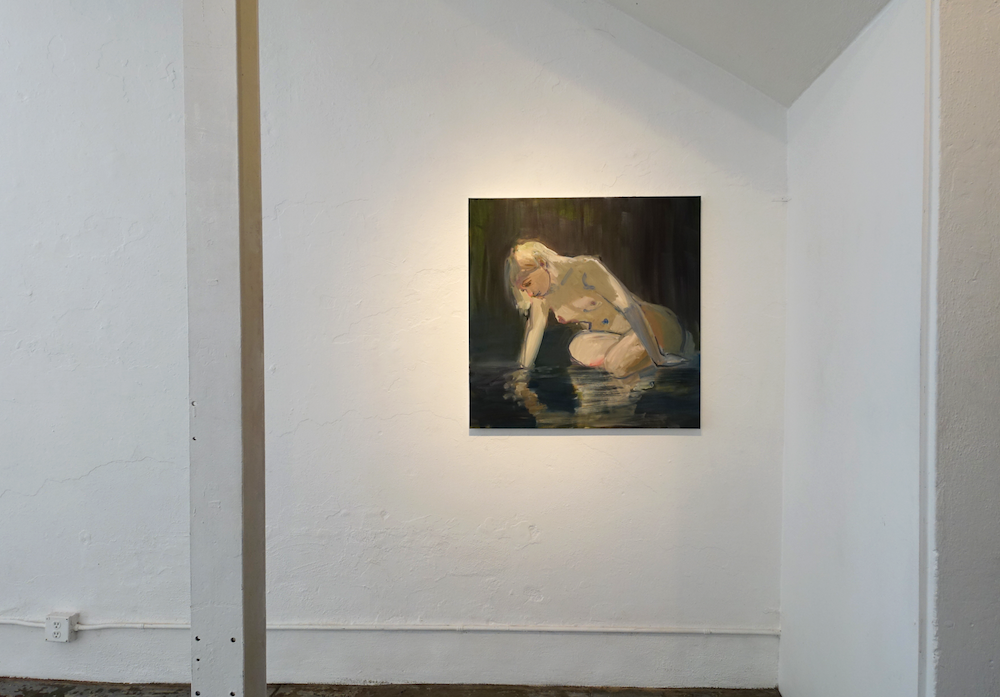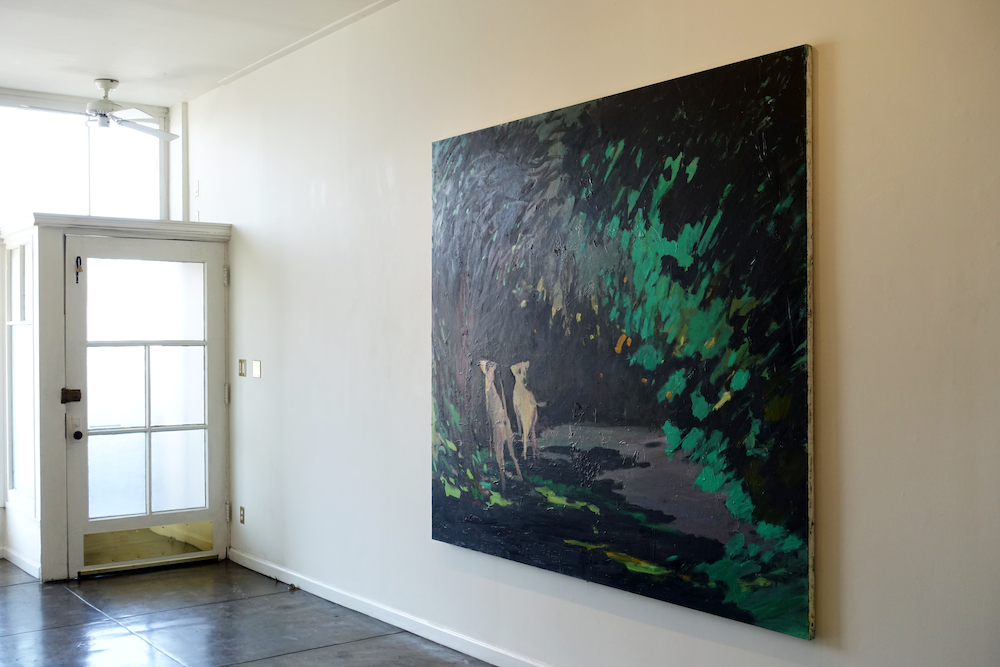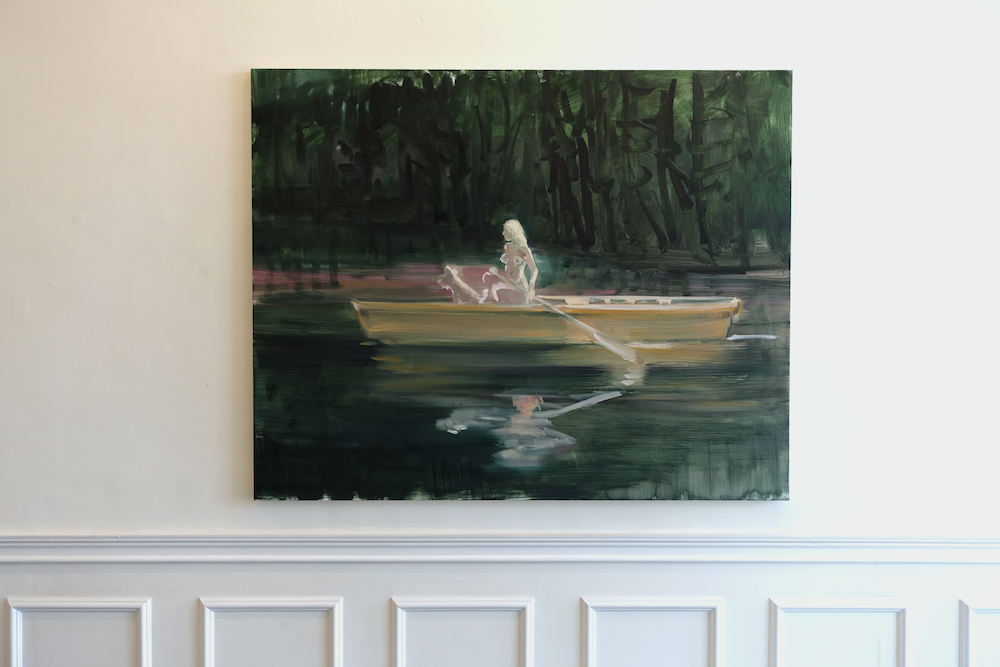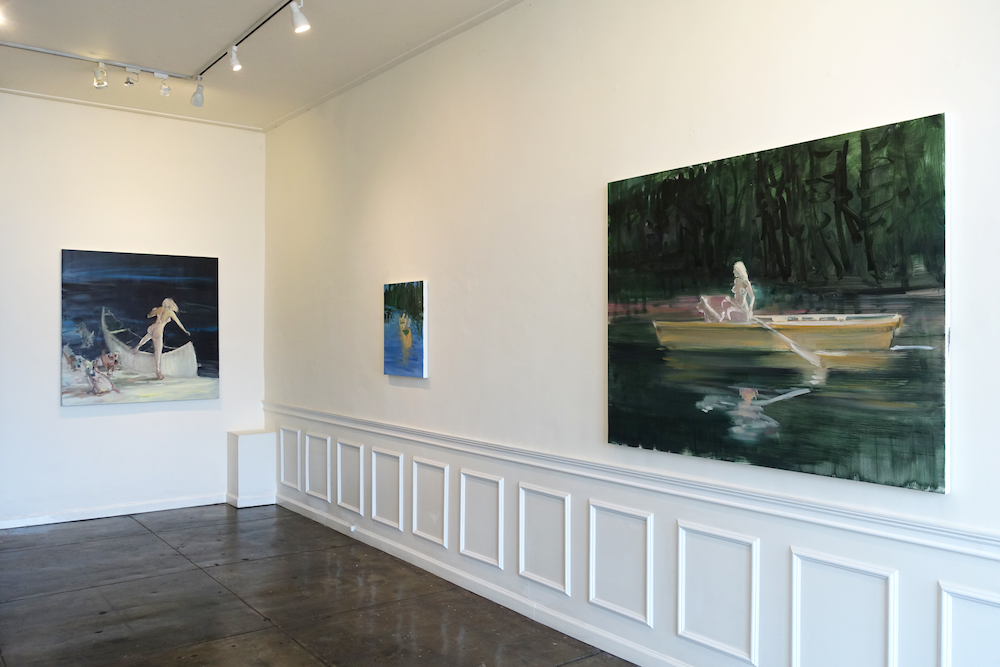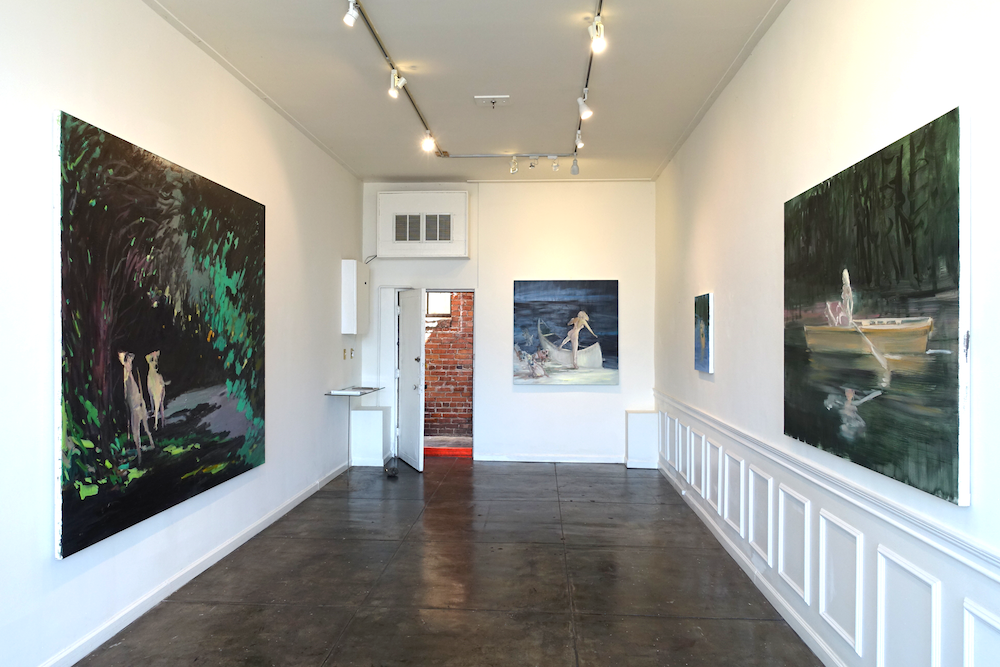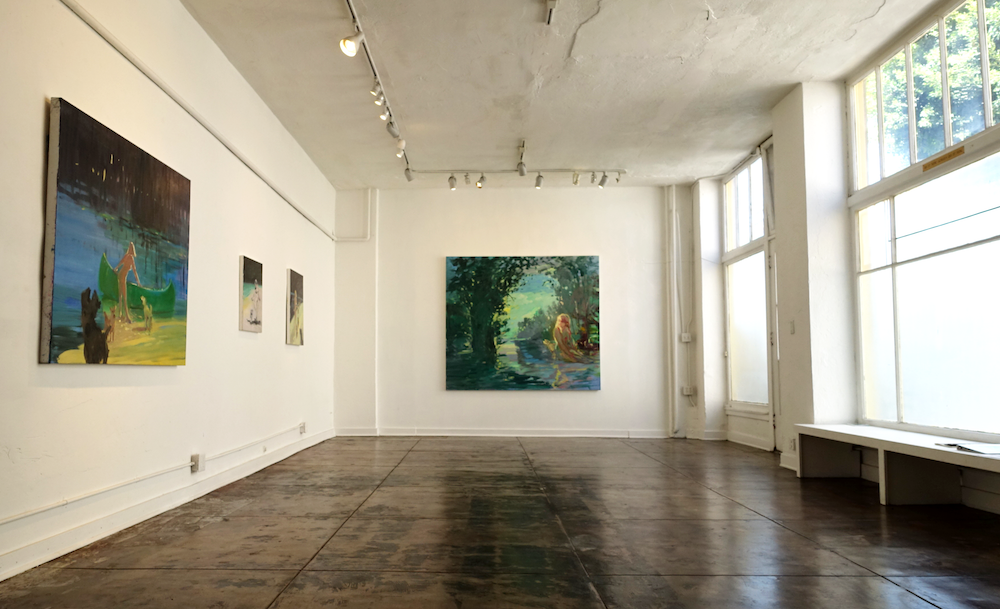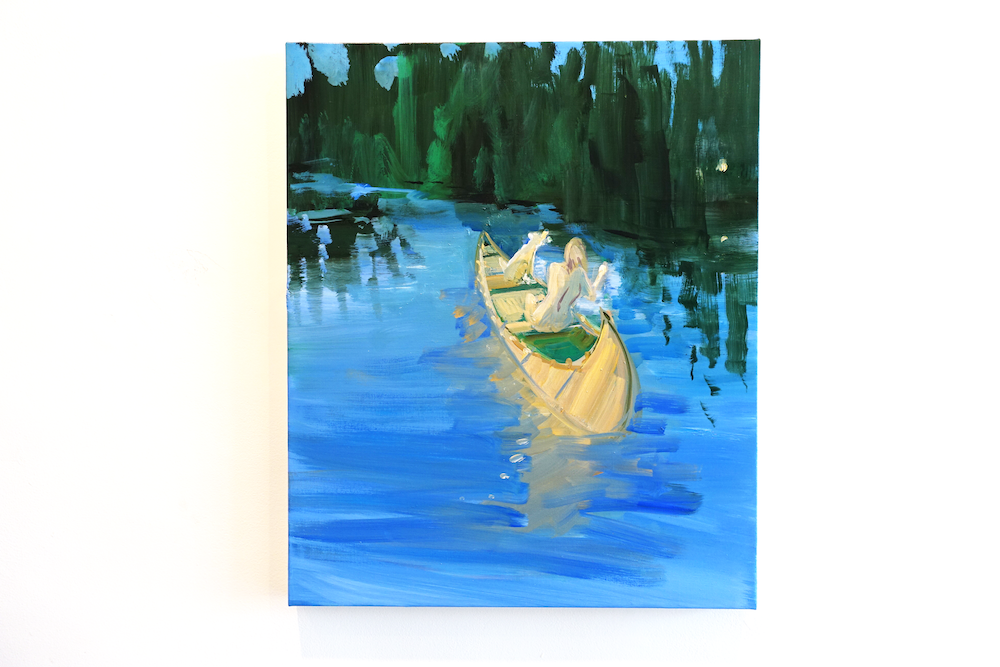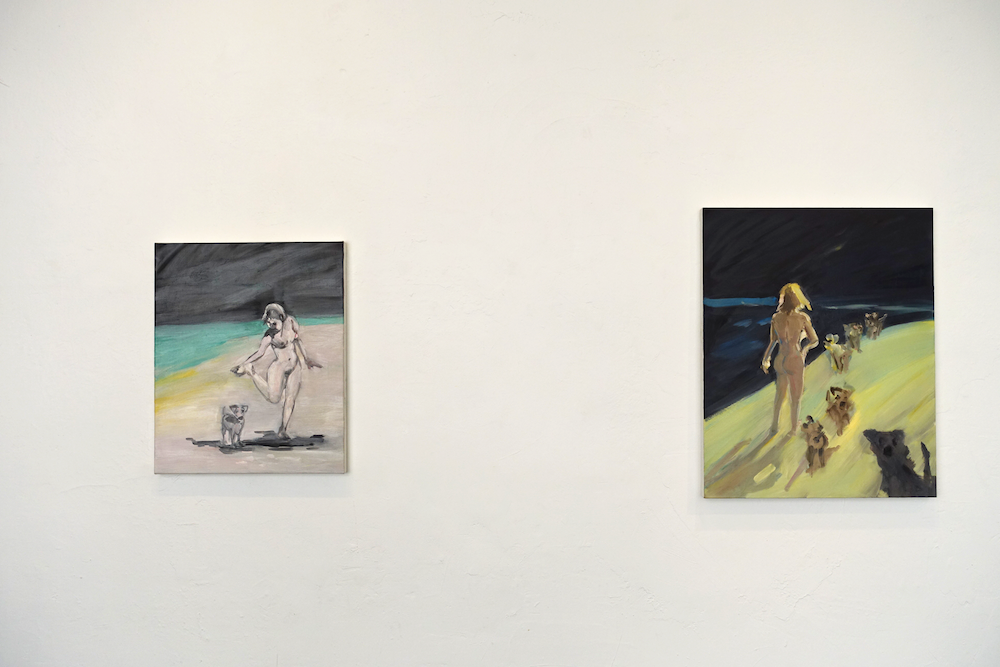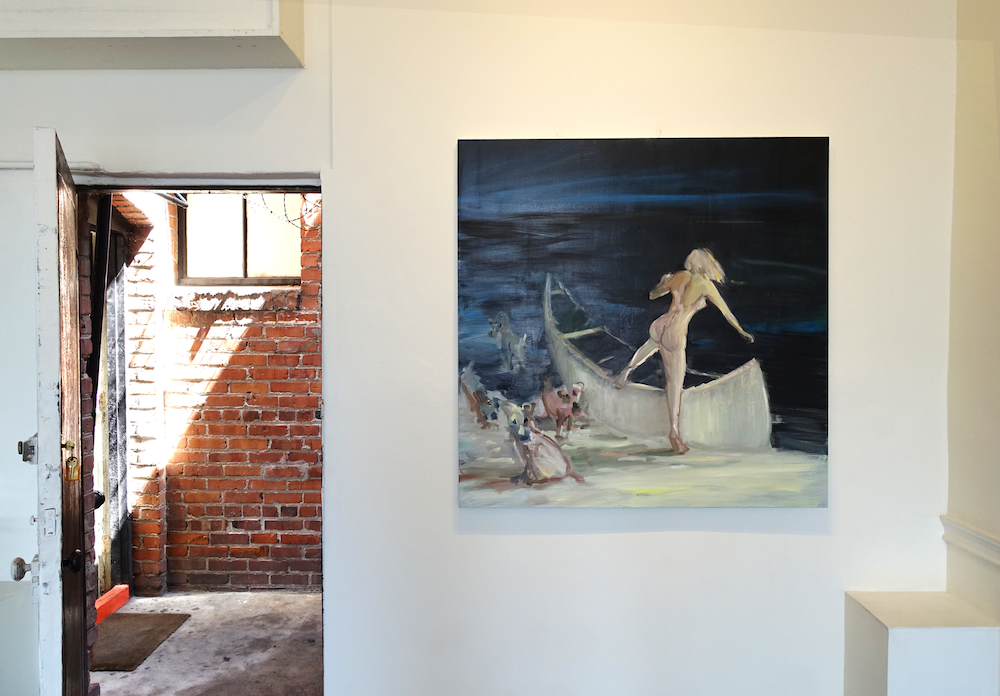Early this summer, while giving me a constructive painting critique, a friend recommended I look at Deborah Brown’s work. The similarity of our shared matter, a female figure surrounded by dogs in nature, was uncanny; and the moment was made even more synchronistic by my location atop a deck, deep in the woods near the Delaware water gap.
Looking at her work online, I found myself moving past these initial similarities and becoming increasingly intrigued by the effortless look of her paint handling and the consistent quality of her prolific production. Clearly, she is a great and virtuosic painter who has reached “flow state.” When viewed collectively, the paintings give a sense of narrative progression where the nude heroine and pack of expressive canines are on the move through a lush landscape of forested waterways. 
Debbie’s minimalist handling of the background features and the fulsome succulence of her brushwork bring to mind the Bay Area Figurative painters of the 1950’s, who introduced figurative form into the language of Abstract Expressionism. I felt that I really needed to see these paintings in person! Noticing that we are neighbors in the industrial zone of East Williamsburg, I reached in hopes of catching a glimpse of a huge body of work that she was just finishing for her solo at the Lodge Gallery in Los Angeles.
I arrived at her studio, just a few doors down from where the ice cream trucks go to sleep at night, a discovered an entire industrial garage that she was able to purchase years before the neighborhood became a real estate hotspot. Up the car ramp was an enormous room with about a dozen of Debbie’s newest paintings spread out so that she could study them playing off each other in a clean exhibition space. Adjacent to this large viewing area is a smaller, but still sizable room where the paintings are made. A large bookshelf of artist monographs positioned in one corner while at center stage the painting wall basks in a beam of natural light. The working wall is flanked on the left by a table of opened books with a large glass palette table to the right - a perfect arrangement of spartan studio furnishings.
The female protagonist in Debbie’s paintings with her pack of dogs brought to mind Diana the Huntress from Ovid’s Metamorphosis and the pack of dogs she inherited, after they had devoured their master Acteon, whom they no longer recognized when he was punished and transformed into a stag for trespassing into Diana’s sanctuary. Many of the dogs in the paintings look like her dog Zeus, a rescue I unfortunately did not get to meet. Although he is a great muse for Debbie, he does not like interlopers. The constant appearance of Zeus’s distinct head and snout shape, which kind of looks like the late-80’s TV character Alf, made it clear that these paintings have an autobiographical nature. When I inquired if the feel of the landscape came from a particular experience of a place, she said that it was based on her memory of several canoe adventures exploring the connected lakes in the boundary waters between the United States and Canada. In many ways, even if the female figure doesn’t look just like Debbie, they are replicas created largely from imagination and the inspirational wells of art history. 
I noticed that the large canvas she was finishing seemed the same size as the two large canvases in the exhibition hall and asked if there was a significance of the size. “de Kooning’s size!” she exclaimed, “77"x 88".” I felt in her statement both an admiration of de Kooning but also a reclaiming of territory in light of the difficulties surrounding his depictions of women as subjects. Debbie was not only inspired by DeKooning and Bay Area figurative painters like David Park, but by a whole host of historical painters who, more often than not, are men who paint women.
Debbie’s work dialogues with the rich tradition of figurative narrative painting and contains careful consideration of the differences between using the female form as a reflective autobiographical device versus one that is more simply voyeuristic and possibly cringe-worthy by nature of the demonstrous “male gaze.” In one of Debbie’s recent Instagram posts, she commented: #womencanpaintnudestoo.
Recall that Renoir has come under fire recently for his depictions of women, fueled by heckling from an Instagram handle. To her own handle, Debbie shared some photos from her visit to the Clark’s recently closed exhibition Renoir: The Body, The Senses. Clearly, Debbie liked the exhibition and shares the opinion of another painting force, Lisa Yuskavage who lectured in Renoir’s support, about his importance as influence on Impressionism and Picasso’s approach to figuration. Despite advocacy from significant feminist painters, Renoir suffers victimization by a mob mentality that has effected his market values and even sparked critical hatred from a New Yorker writer. 
I think it is far too simplistic an idea that men should no longer paint women, but with that said, it is time to re-evaluate and deepen our understanding of what is problematic versus what is beautiful, appropriate and enlightening. It is an important moment in Art History for representational painting in general. Only a few decades back, abstract expressionism was widespread and figurative painting was almost unseen from the contemporary art market. Now figurative and representational painting seems to be everywhere to the point of being overwhelming and possibly confusing. Clearly, there must be differences between one painting of a female nude versus another in terms of how it falls on the spectrum of voyeurism versus empathy. This could be just a matter of how intention honestly matches itself against the way in which something is painted or composed.
As contemporary painters we have the opportunity to step out of time and dialogue with the extended history of painted crafts and enter the current conversation surrounding identity politics and representation. Through many avenues Debbie’s work connects both. She actively transforms the classic motif of the female nude figure from a voyeuristic portrayal of vulnerability to a sensitive narrative of independence. A whole of study could be made of the subtle difference in language between these viewpoints through her work.
It takes a strong voice to steer the course of visual commitment and navigate historical inspirations of painting. Debbie achieves this, while balancing the line between representational painting and the magic expressive quality of the paint itself. —David Molesky
Deborah Brown's new exhibition, dirt’s the only animal who will sleep with you, is on view at The Lodge in Los Angeles through October 26, 2019.

